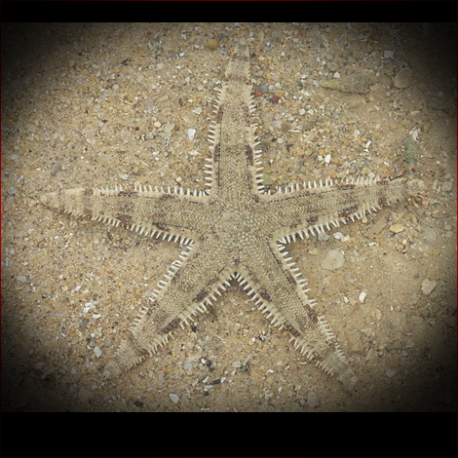More info
Datasheet
| Minimum Tank Size | 400 litres / 105.67 US gallons |
| Maximum Size | 30.0cm / 11.81inches |
| Reef Compatible | Always reef safe |
| Temperament | Peaceful |
| Temperature | 22.2°C / 71.96°F - 25.6°C / 78.08°F |
| Specific Gravity | 1.020-1.025 |
| Carbonate Hardness | 8-12 |
| pH | 8.1-8.4 |
General Description
The Sand Sifting Sea Star, scientifically known as Archaster typicus, is a popular choice for marine aquariums due to its ability to keep the sand bed clean. With a maximum size of 30.0cm, this sea star is typically sold under the name Astropecten polyacanthus and belongs to the Asteroidea family.
Aquarium Suitability
Categorized as suitable with care, the Sand Sifting Sea Star is best housed in large reef tanks to ensure an ample food supply. It is crucial to avoid overstocking the tank, as this species may deplete the detritus and microorganisms in the sand, potentially leading to starvation.
Demands, Care, and Hardiness
With an average hardiness level, these sea stars require specific water conditions, including a pH range of 8.1-8.4, a specific gravity of 1.020-1.025, a temperature between 22.2-25.6°C, and a carbonate hardness (KH) between 8-12. Additionally, they thrive on a diet of detritus, microalgae like spirulina, and zooplankton such as cyclops and pods.
Reef Suitability
Considered always reef safe, the Sand Sifting Sea Star is peaceful in temperament and makes a beneficial addition to reef aquariums. They are compatible with a variety of tank mates and are known to coexist well within a reef environment.
Aquarium Setup
To create an ideal habitat for the Sand Sifting Sea Star, a minimum tank size of 400 liters is recommended to support its feeding habits and movement. A well-established sand bed with ample hiding spots and crevices is essential for this species, ensuring they can forage efficiently.
Behaviour
These sea stars are generally peaceful and spend their time sifting through the sand bed in search of food. Due to their nature as scavengers, they play a vital role in maintaining a clean substrate environment within the aquarium.
Feeding and Diet
While the Sand Sifting Sea Star can feed on detritus and microorganisms present in the sand bed, supplementary feeding may be necessary if signs of starvation are observed. Introducing fish pellets or similar food items into the sand can help sustain their nutritional needs.
Habitat and Distribution
Natural to the East Indian Ocean, particularly Indonesia, the Sand Sifting Sea Star inhabits sandy areas where it can sift through the substrate in search of food sources. Their feeding behavior contributes to the overall health and cleanliness of the aquatic ecosystem in which they reside.

